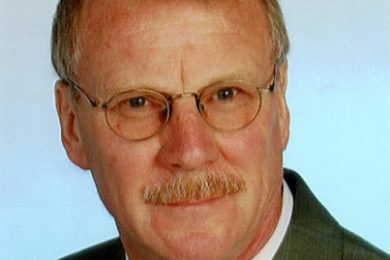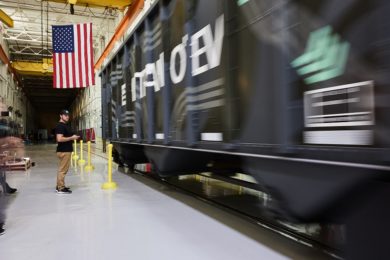Rainer Kahrger will be inducted into the International Mining Technology Hall of Fame in the Bulk Handling category at the gala awards dinner in Denver on February 20th, during SME Conference week.
Early in his career, Structural Engineer, Rainer Kahrger realised that belt conveyors are intrinsic to virtually all continuous material handling operations. Over the past 40 years, his achievements in material handling have altered the approach to belt conveyor design today.
During his tenure as CEO and President of TAKRAF, Rainer led the design of two world record-setting projects in bulk material handling: the largest capacity downhill regenerative conveyor and the longest single flight conveyor.
High in the Atacama Desert of Chile is the El Abra mine. In 1996, TAKRAF designed and built the largest capacity downhill regenerative belt conveyor system. The 8,600 t/h 9.5 km long overland conveyor descends over 500 m in elevation from the mine to the crushing circuit, during which time the vertical drop is used to regenerate 5,500 kW of power. The system employed the strongest belt available at the time with a strength rating of ST 6800 N/mm and revolutionary splice efficiency greater than 50 %.
Subsequent to the world record-setting downhill belt conveyor is the first “racetrack” or “on/off” dynamic heap-leach system developed by Rainer and his team. This innovative and first, for its time, high capacity 6,300 m3/h leach pad bucket-wheel reclaimer, operating in conjunction with mobile stacking and reclaiming conveyors, was developed and put successfully into operation. The same general design concept was replicated, a couple of years later, at the Radomiro Tomic mine and, most recently again, at the Antucoya copper complex. This arrangement has become the standard in the (oxide) copper industry.
At the Henderson (Climax) Molybdenum mine in Colorado USA, Rainer was instrumental in the design and installation of the longest single flight belt conveyor in the world. Designed to the lowest known running resistance ever measured, the 17 km long single conveyor was installed and commissioned in 1999. This conveyor system replaced a train arrangement which had, by then, become economically unsustainable. The single flight conveyor, part of a system of three conveyors, was essential to the client’s requirements for reduced environmental impact.
After his retirement in 2009 as CEO of TAKRAF, Rainer continues to work with TAKRAF as consultant in the field of materials handling. In this capacity, he has made significant contributions to the development of TAKRAF’s innovative new gearless drive technology for the El Teniente and Chuquicamata underground conveyors in Chile.










